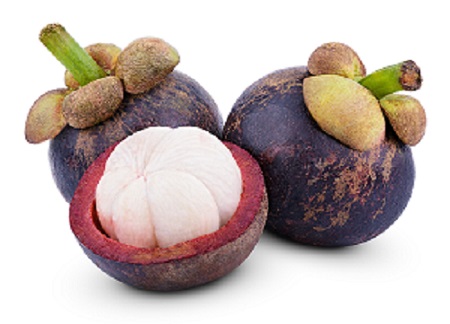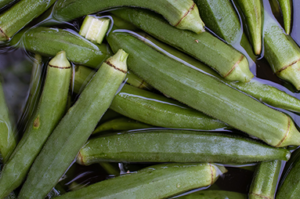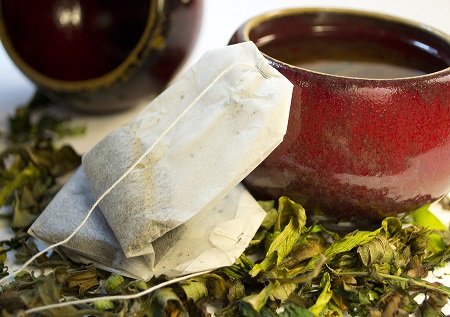Check out these 10 exotic, weird, and wacky fruits that are also incredibly good for you. If you have the opportunity to try some of these at least once, go for it!
1. Purple Mangosteen (pictured above)
A tropical evergreen tree, the mangosteen can be found mainly in Southeast Asia, as well as some parts of Africa. Its unique appearance and flavor makes it one of those fruits you must try.
Benefits: The mangosteen is packed with antioxidants, including vitamin C and “xanthones,” and high amounts of minerals such as copper, manganese, and magnesium.

Mangosteen has been suggested to quench inflammation, which may temper obesity, diabetes, and cardiovascular risks. Mangosteen may also boost the immune system against cancer, improve joint flexibility, and support mental function.
Where to get it? Mangosteens were banned in the US until 2007. Now, you can find them in Chinatowns of major cities in the US, Asian markets, and some specialty groceries. You can also find them freeze-dried at Trader Joe’s.
2. Sweetsop/Custard Apple
The sweetsop has a sweet taste, similar to custard—that’s why it’s also known as a custard apple.
Benefits: Sweetsop is very high in vitamin A and fiber, as well as vitamin C and other antioxidants. It is also a good source of potassium and magnesium, which can help keep blood pressure in check. In scientific studies, sweetsop has been suggested to benefit diabetes.
Where to get it? You may be able to find custard apples in some specialty stores, but you may have better luck with online specialty groceries.
3. Jackfruit
Jackfruit may be prickly on the outside, but the inner fleshy part, in its unripe form, has a texture similar to chicken, making it a great vegetarian meat substitute.
In fact, we’ve got a great recipe right here for Jackfruit Brisket. Amazing!
Benefits: Jackfruit is full of phytonutrients with cancer-fighting properties, and rich in many vitamins and minerals.
Where to get it? You can find jackfruit in Asian markets, either fresh or canned—”young” or “green” for savory dishes, or orange for sweet. Fresh jackfruit can be ordered online.
4. Buddha’s Hand
No, it’s not a lemon gone wild: while Buddha’s hand is in the citrus family, it has no juice or pulp. A mild-tasting rind makes it perfect for zesting, if you can get your “hands” on one.
Benefits: Not generally eaten for its nutritional value, Buddha’s hand is used in Chinese medicine and in herbal remedies, and has antioxidant, anti-inflammatory, and possibly even anti-cancer properties.
Where to get it? Spice shops, specialty groceries, and online stores will usually carry them.
5. Kumquat
The kumquat’s claim to fame is that it’s the only citrus fruit that you can eat whole, with the peel.
Benefits: Kumquats have nearly as much vitamin C as oranges, and are full of other antioxidants as well. Eating the peel means you get lots of great phytonutrients that you would normally throw away. Some of these, known as “flavonoids,” can help protect against inflammation.
Where to get it? Originally from China, kumquats are now widely available in many places, along with the other winter citrus fruits.
6. Jaboticaba
Also known as the Brazilian grape tree, this fruit grows along the trunk and branches of the tree. The fruit is sweet and tropical, and makes a great jelly or jam.
Benefits: Jaboticaba fruit has anti-inflammatory and antioxidant properties, including from vitamin C. It is particularly high in “ellagic acid” and phytonutrients that may help fight against cancer, diabetes, and diabetes-related complications.
Where to get it? Native to South America, online specialty groceries are still your best bet, unless you happen to be in Brazil.
7. Star Apple
The sweet star apple has an inedible rind, but when you cut the fruit in half has a gorgeous star pattern.
Benefits: Star apple is a good source of calcium, and vitamins A and C, as well as myriad other antioxidants and anti-inflammatory components. It is used as a folk remedy in many cultures.
Where to get it? Specialty stores.
8. Snake Fruit
The “salak” fruit is known as snake fruit for its prickly, snake-like skin. The inside is moist and crunchy, with a sweet-sour taste similar to pineapple.
Benefits: Snake fruit is rich in antioxidants, including beta-carotene, the same nutrient in carrots that is said to improve eyesight. Snake fruit may also support a healthy brain and nervous system, possibly protective against Alzheimer’s disease.
Where to get it? Asian markets and online specialty grocers.
9. Sapodilla
Also known as chikoo, chico, or chickoo, this tropical fruit has a smooth and creamy texture.
Benefits: Sapodilla is rich in vitamins A and C and soluble fiber, among other nutrients and phytonutrients. It is studied for its antioxidant properties, and may be immune-supportive.
Where to get it? Sapodilla is grown in Central America, Mexico and India, as well as some cultivation in South Florida. You can buy from specialty groceries or online.
10. Feijoa
Also known as guavasteen or pineapple guava, the feijoa is native to South America and has a sweet pineapple-strawberry flavor.
Benefits: Feijoas are rich in vitamin C and a good source of folate, as well as many other vitamins and minerals. It is studied for its anti-inflammatory and antioxidant properties.
Where to get it? In addition to specialty stores and online, feijoas are now being grown in New Zealand and California, as well as South America.
The variety of different fruits and flavors that nature has given us, each with its own unique taste and benefits, is truly amazing. These fruits may be lesser-known to many of us, but they are no less nutritious or delicious!
How many have you tried? Which ones would you like to try?




It’s really funny. You see I come from Malaysia and now live in UK and most of the fruits you show above grow in Malaysia and I have eaten them but not appreciate them but it’s quite difficult to get them here in UK. I eat e banana every morning with a glass of water is that a good start to the day or should I change that
I can get most of these in Australia and agree with putting mangosteen at the top.
Hi, Pam. You can find many through specialty grocers such as http://www.victoriananursery.co.uk/Tender__Exotic_Fruits/ and http://www.finefoodspecialist.co.uk/shop/the-greengrocer/. The following is a UK article talking about nearly the same fruits: http://www.fruitexpert.co.uk/allabouttropicalandexoticfruits.html.
I would try any fruit but apart from Kumquats we don’t see any of the above where I live in England